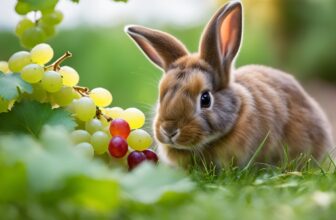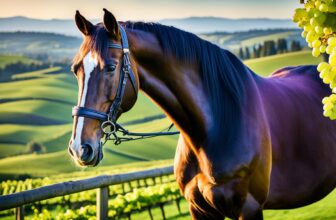Do Deer Eat Grapes? Garden Protection Tips
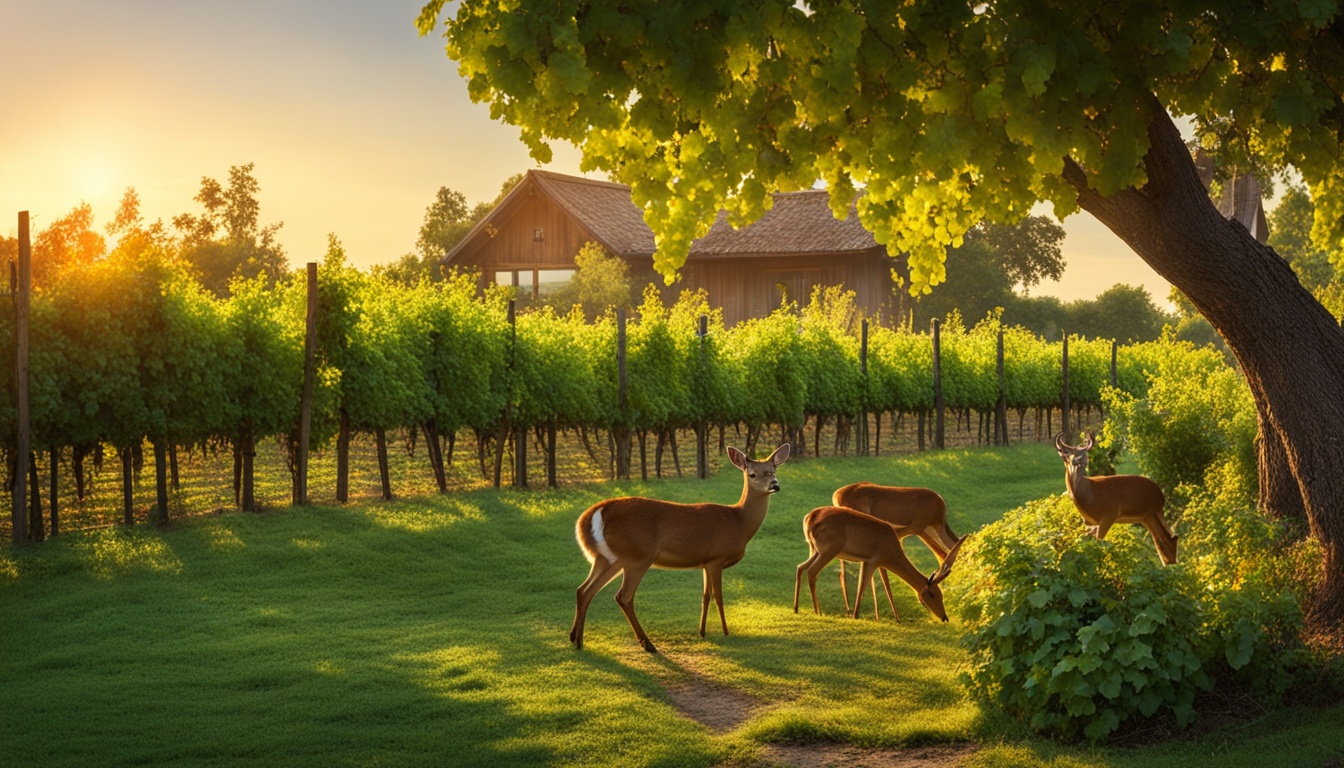
As a gardener or small-scale grape grower, you may have pondered the age-old question: do deer really have a taste for grapes? The answer is a resounding yes – white-tailed deer are notorious for their affinity towards grape vines, and their voracious appetites can wreak havoc on your carefully tended vineyard or backyard grape patch. Implementing effective deer management strategies is crucial to protecting your grape harvest and maintaining a thriving, healthy grape-growing operation.
Key Takeaways
- Deer are known to have a strong attraction to grape vines, consuming entire grape bunches, unripe grapes, and even trampling the vines.
- Grape growers, both large and small, can experience significant losses in their yields due to deer damage.
- Proper fencing, netting, and the use of deer repellents are essential strategies to protect grape crops from deer.
- Maintaining a deer-resistant garden and understanding the deer’s behavior can help minimize the risk of grape crop damage.
- Grapes require specific growing conditions, such as full sun exposure and proper pruning, to thrive and produce high-quality fruit.
The Grape-Loving Deer
Deer have a well-documented affinity for grape vines, often seeking out vineyards and causing significant damage to the delectable fruit and lush foliage. These curious creatures are drawn to the sweet scent and flavor of grapes, leading them to persistently explore and feast on the vines until they are effectively deterred.
Deer’s Affinity for Grape Vines
Deer enjoy both raw grape fruits and dried grapes (raisins). They can cause substantial harm to vines, especially when the fruit is ripe, by consuming the grapes and leaves. While grapes and raisins are safe for deer to consume in moderation, a sudden change in their diet, particularly excessive intake during winter, can pose a risk due to the high sugar content.
Raisins, in comparison to fresh grapes, contain significantly more calories and less water, with nearly 3 times the antioxidant capacity. They also provide fair amounts of copper, iron, calcium, magnesium, phosphorus, potassium, selenium, and zinc. Deer, along with other wildlife such as squirrels, rabbits, horses, goats, alpacas, and certain bird species, find raisins and other dehydrated fruits and berries irresistible.
Deer’s Impact on Vineyards
The presence of deer in vineyards can have a devastating impact on grape production. Deer will often bite into grape bunches, ruining the entire crop, and their trampling can also harm the vines themselves, leading to decreased yields and long-term damage to the vineyard. This can be a significant challenge for grape growers, who must implement effective strategies to deter deer and protect their valuable crop.
“Deer can cause significant damage to vines, especially when fruit is ripe, by eating grapes and grape leaves.”
Fencing: A Reliable Barrier
When it comes to protecting grape vines from the hungry appetites of deer, fencing stands out as one of the most effective garden protection strategies. Deer fencing, designed to be at least 7.5 feet tall, can create a reliable physical barrier that prevents these agile herbivores from jumping over and accessing the valuable grape crops.
Deer Fencing for Grape Vines
Properly installed deer fencing is a game-changer for grape growers looking to safeguard their vineyards. These sturdy, high-reaching barriers not only keep deer out but also allow grape farmers to focus on cultivating their crop without the constant worry of deer damage. By investing in a well-designed deer fence, growers can ensure their grape vines are protected from the unwanted attention of these grape-loving pests.
The key to effective deer fencing lies in its height and installation. Fences that are at least 7.5 feet tall are generally considered the most reliable deterrent, as deer are less likely to attempt jumping over them. Additionally, ensuring the fence is properly secured and maintained is crucial for maintaining its efficacy over time.
| Fencing Option | Height | Effectiveness | Cost |
|---|---|---|---|
| Traditional Deer Fence | At least 8 feet | Highly Effective | Moderate to High |
| DIY Fence with Fishing Line | 7.5 feet | Moderately Effective | Low |
| 6-foot Wooden Privacy Fence | 6 feet | Effective | Moderate |
When selecting and installing deer fencing for grape vines, it’s important to consider factors such as cost, durability, and the specific needs of the vineyard. By investing in a reliable fencing solution, grape growers can protect their valuable crops and ensure a bountiful harvest, free from the unwanted attention of deer.
will deer eat grapes
Deer have a notorious reputation for their fondness for grapes, frequently targeting vineyards and grape-growing gardens as a source of food. These majestic creatures are drawn to the sweet taste and enticing aroma of grapes, often consuming entire grape bunches and wreaking havoc on the crop. Their insatiable curiosity and eagerness to sample different foods make them a significant threat to grape cultivation, leading to substantial losses for winemakers and gardeners if left unchecked.
Extensive research and anecdotal evidence suggest that deer have a strong affinity for grapes. Studies have observed deer eating grapes from various vineyards, indicating their clear preference for grapevines. Strategies like hanging aluminum pie plates have proven effective in deterring deer from grape consumption, as the reflections, noise, and motion created by these plates can scare the deer away.
Interestingly, deer tend to venture close to human habitation, such as within 10 yards of back doors, to feast on grapevines during the spring and summer months. This behavior highlights the deer’s unwavering attraction to these succulent fruits. Additionally, the wild Muscadine grape, a close relative of the cultivated grape, is known to be a favorite among deer, further supporting the assumption that deer will eagerly consume regular grapes as well.
While grapes may not be a substantial part of a deer’s regular diet, they are often considered a tasty snack or treat. Deer have been observed feeding on both grape leaves and fruit, demonstrating their versatility in utilizing various parts of the grapevine. In some cases, deer have even been known to help trim grapevines free of charge, up to a height of about six feet, showcasing a potential benefit of their presence for minimal vineyard maintenance.
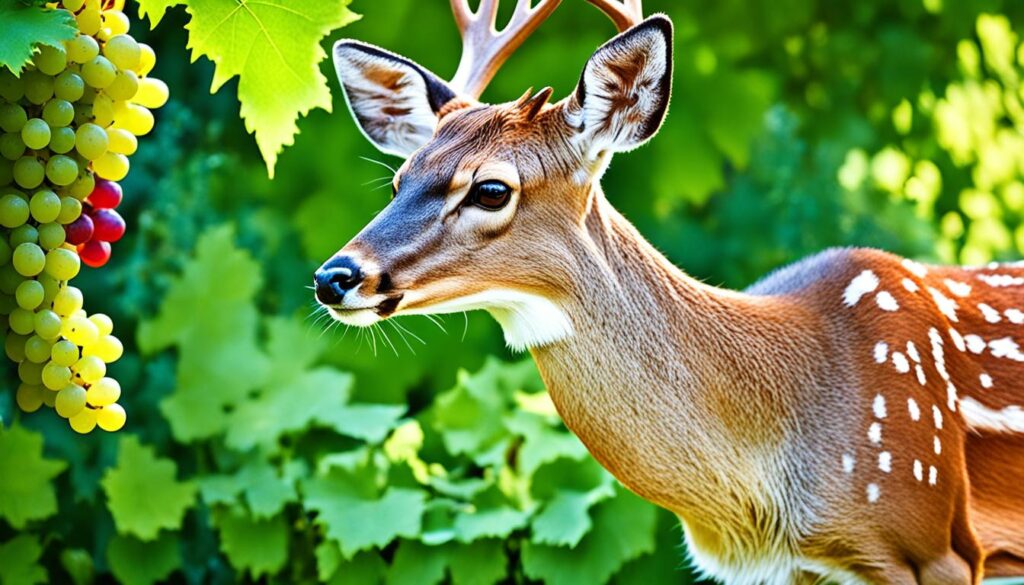
The relationship between deer and grapes is a complex one, with both benefits and challenges for grape growers. Understanding the deer’s dietary preferences and employing effective deterrence strategies can help gardeners and winemakers protect their precious grape crops and maintain a thriving vineyard or garden. By staying informed and proactive, grape enthusiasts can coexist with these curious creatures and ensure a bountiful harvest season after season.
Netting: Protecting Aerial Attacks
In addition to the threat of deer, grape growers must also contend with aerial attacks from birds, which can consume a significant portion of the crop. Bird netting has emerged as an effective solution for safeguarding grape vines from these winged invaders. The netting is draped over the vines, creating a physical barrier that prevents birds from accessing the precious grapes.
Bird Netting for Grape Vines
Loss of crops due to bird damage in larger vineyards could be as high as 10-30%, resulting in millions of dollars’ worth of lost revenue. In smaller vineyards, bird damage can sometimes lead to a total loss of the crop. To mitigate these devastating impacts, grape growers often turn to bird netting as a reliable defense mechanism.
The best protection for grape clusters against birds is through physical exclusion using bird netting. Draping bird netting over vine rows and tying it at the bottom is a common method of protecting grapevines. Fruit zone netting and canopy netting are alternative approaches to whole row draping for protecting grapevines from birds.
Shading Effects of Netting
While bird netting is an effective solution, it can also have a shading effect, reducing the amount of sunlight reaching the leaves. This, in turn, can impact the grape’s sugar content and the timing of veraison, the onset of ripening. Grape growers must carefully consider the tradeoffs between protecting their crop from bird damage and maintaining optimal growing conditions for their vines.
To address the shading issue, grape growers may experiment with different netting materials or adjust the placement and tension of the netting to find the right balance between protection and sunlight exposure. Ongoing monitoring and adjustments are often necessary to ensure the vines receive the right amount of sunlight while still keeping the birds at bay.
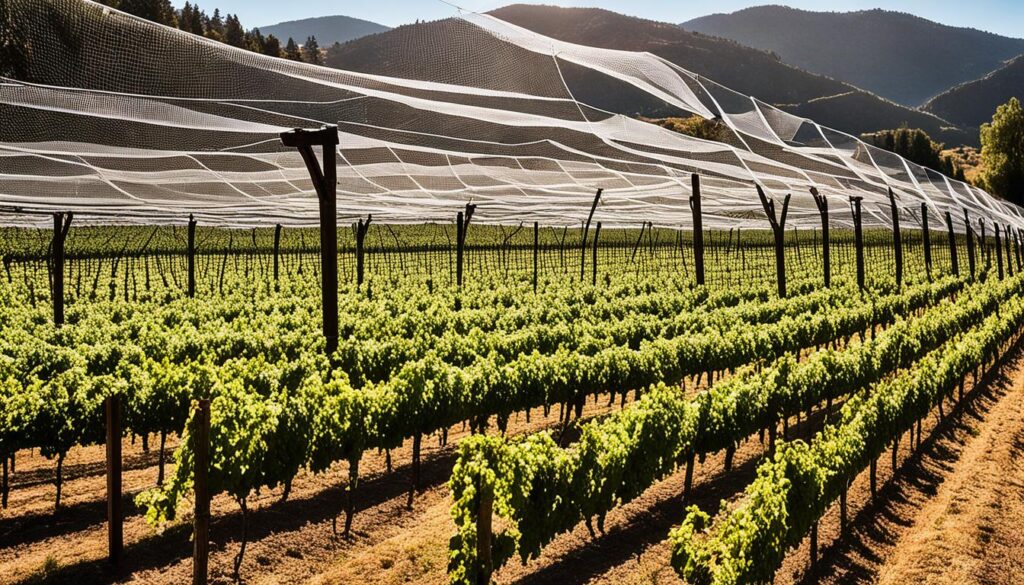
Ultimately, the use of bird netting is a crucial component of an integrated pest management (IPM) strategy for grape growers. By combining physical barriers, chemical repellents, and other deterrents, they can effectively safeguard their precious vineyard pests and fruit crop damage, ensuring a bountiful garden protection and deer deterrents.
Natural Deterrents and Repellents
In addition to physical barriers like fencing and netting, growers can employ natural deterrents and repellents to keep deer away from their grape vines. Planting deer-resistant plants, such as those with strong scents or unpalatable leaves, can create a less attractive environment for deer. Additionally, applying deer repellents containing natural ingredients like garlic and pepper can effectively ward off these persistent pests, complementing the use of physical barriers for comprehensive wildlife management.
Grapes and grape leaves are considered a delicacy for deer, and young deer have been documented dining on gardens and grapevines. Wineries and vineyards often face challenges from deer, who can quickly cause damage to decorative trees, shrubs, and fruit trees, as well as vegetable gardens.
Fortunately, there are several natural solutions to deter deer. A natural deterrent for deer and rabbits consists of putrescent egg solids, garlic, sodium lauryl sulfate, potassium sorbate, and water. Deer and rabbits also dislike an egg white-based cocktail, which can serve as an effective repellent. According to the Department of Natural Resources at Cornell University, these repellents can reduce browsing on individual shrubs or trees by 50-75%.
In addition to repellents, certain deer-resistant plants can be used to create a less appealing environment for deer. Plants with strong aromas, such as lavender, catmint, garlic, and chives, can help deter these animals. Other deer-repelling plants include currants, Rocky Mountain Juniper, clumping bamboo, and Russian Olives.
Homeowners and growers can also use a variety of other natural deterrents, such as motion-activated sprinklers, wind chimes, and moving decorations, to discourage deer from entering their yards and vineyards. By combining physical barriers, natural repellents, and deer-resistant plants, they can effectively manage wildlife and protect their valuable crops and landscaping.
Conclusion
Protecting grape vines from deer is a critical challenge for winemakers and gardeners. By implementing a comprehensive garden protection strategy that combines physical barriers like fencing and netting, as well as natural wildlife management deterrents and repellents, growers can effectively safeguard their valuable grape crops and maintain healthy, thriving vineyards. Understanding the deer’s affinity for grapes and taking proactive measures to deter deer is essential for successful grape cultivation and minimizing wildlife-related losses.
Grape growers must stay vigilant and adapt their techniques to the evolving threats posed by deer and other pests. Investing in durable fencing, strategically deploying netting, and leveraging natural deterrents can all contribute to the long-term sustainability and profitability of their vineyards. By proactively addressing the garden protection needs of their grape vines, growers can ensure bountiful harvests and continue producing the high-quality wines that delight consumers.
Ultimately, the battle against deer and other grape-loving pests requires a multifaceted approach, blending innovative technologies, time-tested methods, and a deep understanding of the animals’ behavior and ecological needs. By staying informed, resourceful, and adaptable, grape growers can effectively protect their vineyards and safeguard the future of their beloved grape-growing operations.



